By Debayani Bose
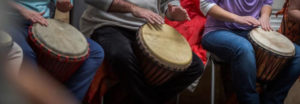 Have you ever been stressed and turned to your favourite song for solace? What you experience is music-assisted healing. Music therapy is becoming increasingly popular for treating various physical and mental ailments, such as heart disease, depression, autism, substance abuse, and Alzheimer’s.
Have you ever been stressed and turned to your favourite song for solace? What you experience is music-assisted healing. Music therapy is becoming increasingly popular for treating various physical and mental ailments, such as heart disease, depression, autism, substance abuse, and Alzheimer’s.
The therapeutic influences of music come alive in Rhythms of Life: The Unsung Power of Music Therapy, a powerful documentary that explains the origins and applications of music 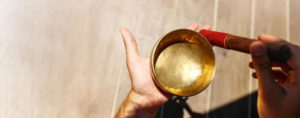 therapy, as well as its therapeutic powers to develop, maintain, and restore abilities in heart related strokes, autistic students, former child soldiers in Africa, and a variety of people with disabilities.
therapy, as well as its therapeutic powers to develop, maintain, and restore abilities in heart related strokes, autistic students, former child soldiers in Africa, and a variety of people with disabilities.
Music therapy acts as a safe and non-invasive method to help in improving mood through emotional expression. It can help reduce symptoms in depressive and anxiety disorders along with standard treatments like pharmacotherapy and psychotherapy. It can also offer individuals a non-threatening way for catharsis and an opportunity to process their emotions, traumatic situations, and grief that they may be feeling.
 According to historical records, music therapy began after World War II when institutionalised war veterans, suffering from various mental, emotional, and physical traumas, responded positively to community music performances. Music has a direct impact on cognitive abilities, memory, and learning.
According to historical records, music therapy began after World War II when institutionalised war veterans, suffering from various mental, emotional, and physical traumas, responded positively to community music performances. Music has a direct impact on cognitive abilities, memory, and learning.
A well-known study on college students (published in Journal of the Royal Society of Medicine as a research paper titled The Mozart Effect) found that listening to Mozart’s music improved their problem-solving ability. The interaction of melody, harmony, and rhythm stimulates the senses and promotes relaxation.
Sharing the effect of music therapy on the mind and body, Sonal (name changed) says, “I felt a deep sense of connection with the group during the drum circle session. It felt like my 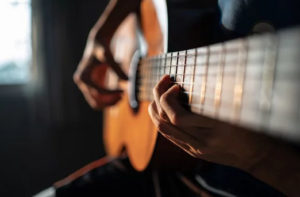 inhibitions had left the room and so had my stress and worries. I really liked when various instruments were being passed from one person to another turn by turn. The shakers, kalimba, xylophone and frog guiro were my favourites.”
inhibitions had left the room and so had my stress and worries. I really liked when various instruments were being passed from one person to another turn by turn. The shakers, kalimba, xylophone and frog guiro were my favourites.”
“Music activates the brain’s reward networks. Alzheimer’s, autism spectrum disorders, and anxiety disorders can be helped by music therapy,” explains Milan Balakrishnan, consultant psychiatrist, and psychotherapist at Malina Hospital, Mumbai.
The science behind music therapy
Scientists across the globe have validated the profound effect of music therapy on emotions and the body.
“Music as a vibratory stimulus triggers chemical releases of happy hormones, namely 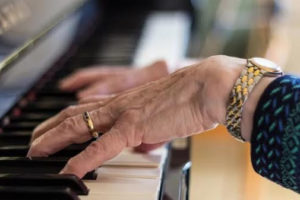 Endorphins-the euphoric brain chemical, Cortisol-the stress-reducing hormone, and Dopamine- the ‘feel-good’ neurotransmitter within the brain, altering a person physically and mentally. Hence music therapy can be used in managing patients with mental health disorders such as anxiety and mood disorders. Also, since music affects neuroplasticity of the brain, it can facilitate the management of degenerative neurological diseases such as Parkinson’s and Alzheimer’s,” explains Sravani Reddy G, Global COO and Director of Board, Ojaska.
Endorphins-the euphoric brain chemical, Cortisol-the stress-reducing hormone, and Dopamine- the ‘feel-good’ neurotransmitter within the brain, altering a person physically and mentally. Hence music therapy can be used in managing patients with mental health disorders such as anxiety and mood disorders. Also, since music affects neuroplasticity of the brain, it can facilitate the management of degenerative neurological diseases such as Parkinson’s and Alzheimer’s,” explains Sravani Reddy G, Global COO and Director of Board, Ojaska.
Ojaska is a health & wellness brand with products and services on the concept of Integrative Medicine.
Says Abhishek Banerji, an arts-based therapist and integrative psychotherapist, “I often use receptive ‘relaxation’ music therapy to address concerns of anxiety, depression, stress, and trauma. We all know that music is therapeutic by nature, but I subscribe to music therapy as 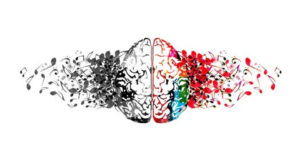 the intentional use of music that leverages its benefits to achieve specific therapeutic goals. I use it primarily in the ‘receptive’ listening-based method and the ‘active’ method based on playing musical instruments.”
the intentional use of music that leverages its benefits to achieve specific therapeutic goals. I use it primarily in the ‘receptive’ listening-based method and the ‘active’ method based on playing musical instruments.”
Expressive arts therapists assist participants in expressing oneself in ways other than verbally. At the same time, they use the arts -dance, music, art, and drama—to dive deeper into your psyche and unconscious processes.
According to Banerji, Guided Imagery and Music (GIM) Therapy, which combines music and imagery experiences, activates inner reflection, memories, and feelings in his clients. Music-Mood-Memories-Mindfulness-Metaphor-Meaning is a technique that allows music to be used to work with a person’s mood and memories mindfully.
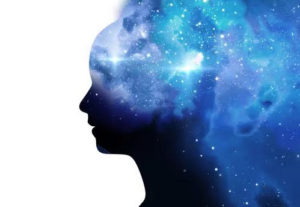 In active and interactive music therapy sessions (i.e., sessions that use interactive music making or active listening), the music therapist guides the patient to engage with the music through hands-on sound exploration, improvisation, playing an instrument, singing along, composing lyrics, and/or participating in other forms of activity. Active music therapy consists of musical improvisation between patient and therapist by singing or by playing different musical instruments, according to the vital functions, the neurological conditions and the motor abilities of the patients.
In active and interactive music therapy sessions (i.e., sessions that use interactive music making or active listening), the music therapist guides the patient to engage with the music through hands-on sound exploration, improvisation, playing an instrument, singing along, composing lyrics, and/or participating in other forms of activity. Active music therapy consists of musical improvisation between patient and therapist by singing or by playing different musical instruments, according to the vital functions, the neurological conditions and the motor abilities of the patients.
Lakshmi Dutta, expressive arts practitioner, points out, “In India, ceremonies and festivals have long included dance, music, and other expressive art therapies. However, today there is a greater understanding of the therapeutic uses of art.”
Benefits of music therapy
Age is no bar for music therapy. Everyone, from children to adults, can benefit from it. 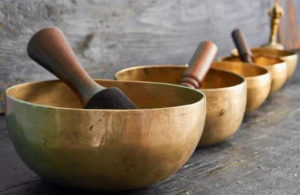 Describing its benefits, Niati (Khanna) V Mariiyya, founder of ‘IDHAYA: Conscious Living’, says, “Sound healing works on vibration, it tunes the body like it tunes a musical instrument. Sound healing slows down the brain waves that affect every cell in the body, shifting from sickness to relaxation and allowing the body to heal itself.”
Describing its benefits, Niati (Khanna) V Mariiyya, founder of ‘IDHAYA: Conscious Living’, says, “Sound healing works on vibration, it tunes the body like it tunes a musical instrument. Sound healing slows down the brain waves that affect every cell in the body, shifting from sickness to relaxation and allowing the body to heal itself.”
This is achieved through the use of mantras or by playing certain instruments. It is based on the ancient Indian philosophy, medicine, and yoga system that focuses on sound vibrations. It complements other therapy modalities. However, combining it with other therapies depends on the person’s condition, comfort level, and medical requisites,” she elaborates.
“I had a slipped disc in my lower back. Back pain is a vicious circle in which one cannot move much due to pain, which causes muscles to weaken and worsens the situation. Based on a friend’s suggestion, I took to music therapy sessions. I felt so light, positive, refreshed, and re-energised after each session,” shared a recipient of music therapy on conditions of anonymity.
“Music therapy is fast becoming a popular treatment as an increasing number of people seek out the wonder drug with no or little side effects though a therapist has to be mindful that the client doesn’t get overstimulated or triggered. When combined with traditional treatment modalities, music therapy can produce excellent results for the weary soul or the aching body,” concludes Banerji.
Trans World Features
(Credit to author and TWF mandatory)



